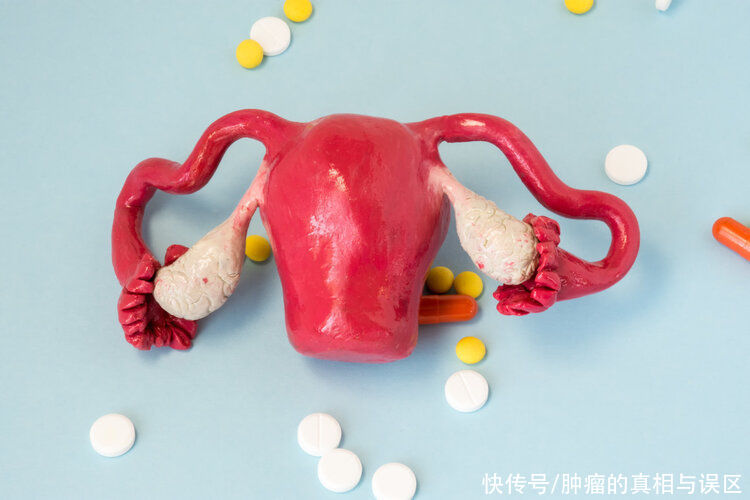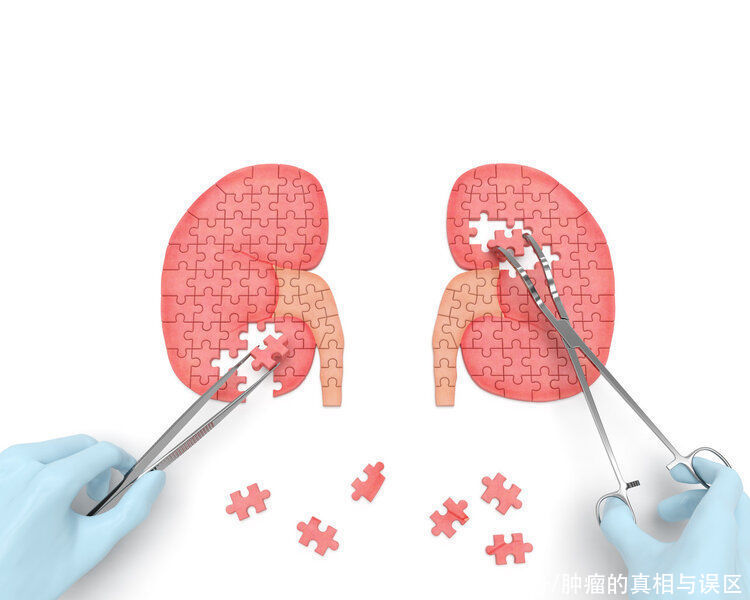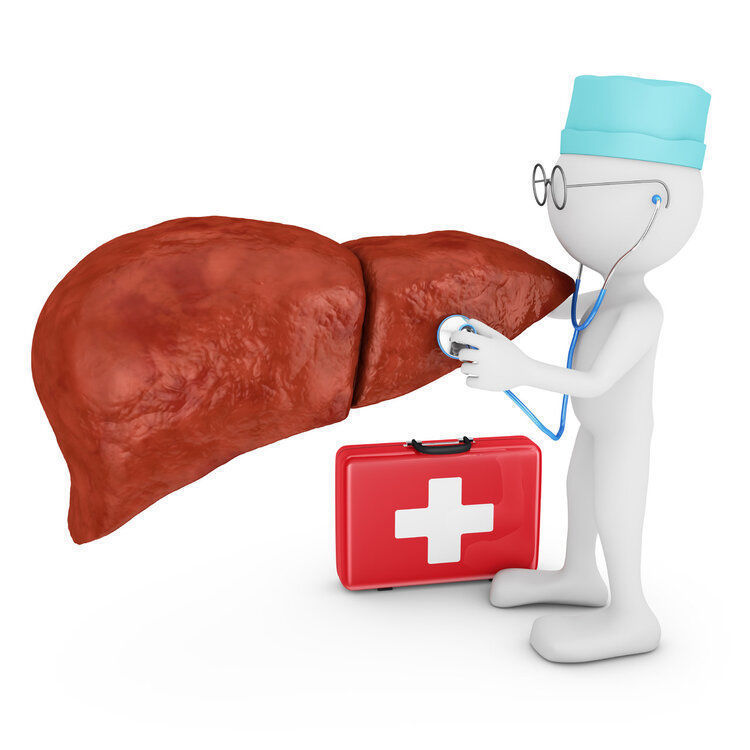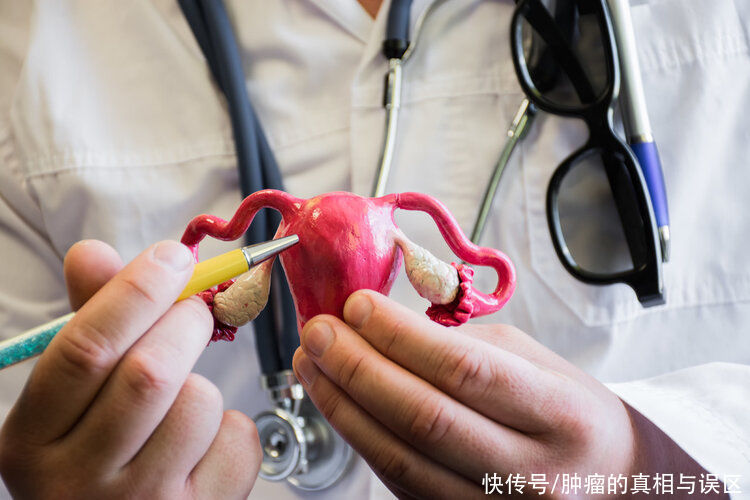“Doctor, what can I do? I’m only 28 years old, and I haven’t gotten married and have children yet. How could I have ovarian cysts? Is this ovarian cancer? Is there any way to be saved?”< /p>
In the doctor’s consultation room, Ms. Wang took the examination report and asked a series of questions, fearing that she would die soon because of ovarian cysts.
In recent years, with the increase in the rate of physical examinations, more and more people have been found to have cysts in their bodies, such as liver cysts, kidney cysts, and ovarian cysts. and many more. Due to the difference between the word cyst and “tumor”, many patients directly associate it with the tumor, thinking that the cyst will turn into a tumor, which intensifies their panic and anxiety all day long.
So, are cysts really “close relatives” of tumors? Is it also life-threatening? I have a cyst, what should I do? Join us today for a scientific discussion.

1. Why do cysts grow on people?
In general, cysts can form for a variety of reasons. Some are caused by inflammation, that is, an inflammatory reaction at the beginning. After the inflammation is absorbed, a cavity is formed in the tissue, and imaging examinations are performed. For example, color Doppler ultrasound and CT will find a cavity with a liquid surface at the same time; some are caused by parasites, such as hydatid cysts. After the parasite invades the body, the body wraps it instinctively, forming a cyst.
There are also some cysts, such as bone cysts, which belong to inflammatory pseudotumor, which is a defect on the bone, a tumor-like lesion, although it looks like a tumor on the imaging A tumor, but it is not a tumor and does not spread.
Small cysts will not affect people’s normal life, and most cysts are benign, and the possibility of malignant transformation is very small, generally not more than 5%. Of course, different parts, Different types of cysts have different rates of malignant transformation.
In addition, some parts of the cyst need to be vigilant, such as the cyst is located in a bad part of the body, such as the tibia, femur with cysts, It is easy to cause fracture and needs to be cured in time.; Cysts close to major blood vessels and major nerves will also compress normal tissues after development, affecting the body function, so it should also be handled in a timely manner. Some cysts are abscesses, and there are pathogens in the swelling cavity. If they rupture, they will cause infection, so they should also be removed.

Two, 5 kinds of common cyst, tell you how to deal with it
Cyst is a common disease. In the human body, except for the hair and nails that do not grow cysts, other parts of the body may have cysts. So if a cyst grows, should it be cut or not? Here are some suggestions for some common cysts.
1. Liver cyst
After being diagnosed as a cyst, the first thing to look at is the disease part. Cysts in some areas are actually nothing to worry about. such as liver cysts. Hepatic cyst is a collective name for all vesicular lesions of the liver, commonly known as “vesicles” in the liver.
The vast majority of liver cysts are congenital, that is, liver cysts are formed due to some congenital developmental abnormalities. Acquired factors are mostly related to parasitic cysts, inflammatory stimulation, trauma and so on.
Liver cysts are common benign lesions, and only a very small number of liver cysts caused by acquired tumors may deteriorate into Liver cancer, the formation of this liver cyst is related to the primary tumor, and whether it becomes cancerous depends on the nature of the primary tumor.
Small liver cysts do not require treatment, generally do not develop or develop slowly, and do not become cancerous. Can. B-ultrasound or CT is very reliable in diagnosing hepatic cysts, and more examinations are generally unnecessary.
Excessive liver cysts can squeeze normal liver tissue or surrounding organs, damage the liver, and cause compression symptoms, such as upper abdominal discomfort or pain. It is generally accepted that cysts larger than 5 cm in diameter should be treated, including cystectomy, cyst fenestration, or subtotal cystectomy Surgery, cyst drainage, cyst puncture and sclerotherapy, etc.

2. Kidney cyst
Renal cyst is a general term for cystic masses of varying sizes that do not communicate with the outside world. It is clinically divided into adult polycystic kidney disease, simple renal cyst and acquired renal cyst.
Renal cysts are more common in men, and the incidence increases with age. The survey found that half of people over the age of 50 will have one or more cysts in their kidneys.
Kidney cysts are benign lesions, only for renal cysts caused by multiple dialysis due to kidney disease. higher cancer rate. Most kidney cysts do not cause any symptoms, but when the cyst becomes too large to replace too much kidney tissue, it can lead to kidney damage such as chronic kidney failure.
Because the initial symptoms are not obvious, many patients with renal cysts are not very concerned about the disease. And if you have a kidney cyst, should you ignore it? It also depends on the situation. If the diameter of the cyst is less than 5 cm and there are no clinical symptoms, regular B-ultrasound review can be done; if the diameter of the cyst is greater than 5 cm, renal function is impaired, or the cyst has bleeding infection, Symptoms such as rupture require surgery.
3. Pancreatic cysts
Pancreatic cysts include true and pseudocysts, of which about 80% are pseudocysts. Common cystic tumors such as pancreatic cystadenoma, cystadenocarcinoma, teratoma and cystic epithelial carcinoma belong to the category of proliferative cysts, which are benign or low-grade malignant.
Pseudocysts of the pancreas are secondary to acute or chronic pancreatitis, pancreatic injury and other diseases, and contain a large amount of pancreatic secretions overflowing from the pancreatic ductal system. It is not a true cyst because there are no epithelial cells and it is surrounded by fibrous or granulation tissue. Pseudocyst is a self-limiting disease that usually resorbs on its own, but requires treatment when clinical symptoms appear. Currently commonly used treatments include conservative drug therapy, internal drainage, external drainage, and cystectomy.
True cysts, except for a small number of asymptomatic polycystic and retention cysts, may not be operated temporarily, and regular B-ultrasound and CT review are required.< span>Most pancreatic true cysts such as mucinous cystadenoma, solid pseudopapillary tumor and intraductal papillary mucinous tumor are potentially malignant. Pancreatic endocrine tumors and serous cystadenomas are also cancerous. Therefore, the diagnosis of Definite pancreatic true cysts should be treated surgically in principle.

4. Breast cyst
In recent years, the diseases of female breast have been increasing, and the proportion of female diseases is increasing. Breast cysts are one of the most common breast diseases in women between the ages of 30 and 50, and are formed due to highly dilated mammary ducts. The mechanism is often that the imbalance of hormone levels leads to excessive proliferation, elongation, and folding of the mammary duct epithelium, epithelial cells fall off during the involution process, and secretion discharge is hindered to further form cysts. Breast cysts are mostly benign lesions, but there is also a 0.2%~2.3% probability of causing malignant transformation.
Most patients with breast cysts have no clinical symptoms, and some patients have breast tenderness and palpable lumps. Regular follow-up is usually recommended for patients with asymptomatic breast cysts. Patients with obvious pain symptoms, history of local cyst infection, and psychological stress often require clinical intervention. Common interventions include aspiration, sclerotherapy, open surgery, or minimally invasive atherectomy.
5. Ovarian cysts
Multiple cysts in adult women In addition to the above breast cysts, And ovarian cysts. Ovarian cyst is a kind of ovarian tumor, which can be affected by all ages, and is most common between 20 and 50 years old. Ovarian tumors are common tumors of female genitalia, with various properties and shapes: unilateral or bilateral, cystic or solid, benign or malignant, among which cystic tumors are more common, with a certain proportion of malignant tumors.
In terms of treatment, if the cyst is small and the patient is young, conservative treatment is preferred, supplemented by oral contraceptives and analgesics for symptomatic treatment;< /span>If the cyst grows rapidly or the examination indicates that it may be malignant, early surgical resection of the lesion or even the ovary is preferred to avoid deterioration; If malignant is diagnosed, the surgical staging should be clarified immediately, and appropriate professional treatment should be carried out as soon as possible.

Summary: Most cysts are benign, and the possibility of malignant transformation is very small, but That doesn’t mean it’s okay to be negligent. If the cyst has no pain, no fever, no risk of recent rupture, and no possibility of deterioration or continued development, and is very small, you can follow up regularly to observe its changes dynamically. If there is a sudden change in a period of time, pay attention to it. #Spring Life Punching Season#
References:
[1] “Don’t panic if you have a cyst”. Jilin Daily. 2010-01-27
[2] “Liver cysts will not become cancer”. Health Times. 2009-03-02
[3] “Analysis of the level of mindfulness and its influencing factors in patients with ovarian cysts” .Basic Medicine Forum.2022-01-10
Reprinting is prohibited without the author’s permission